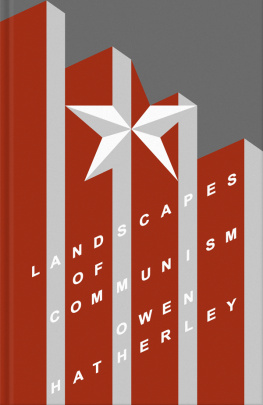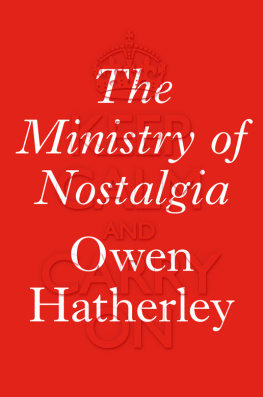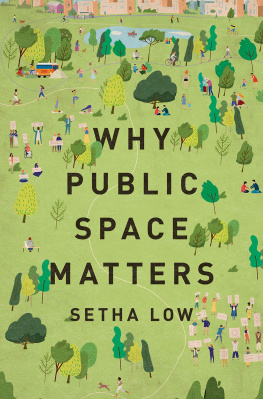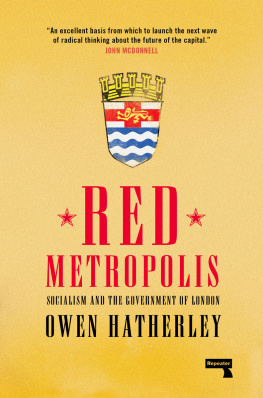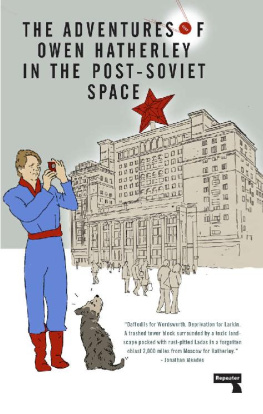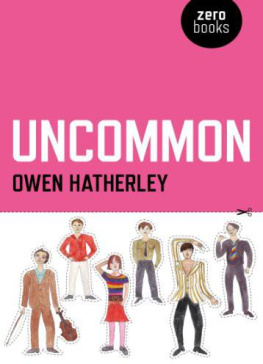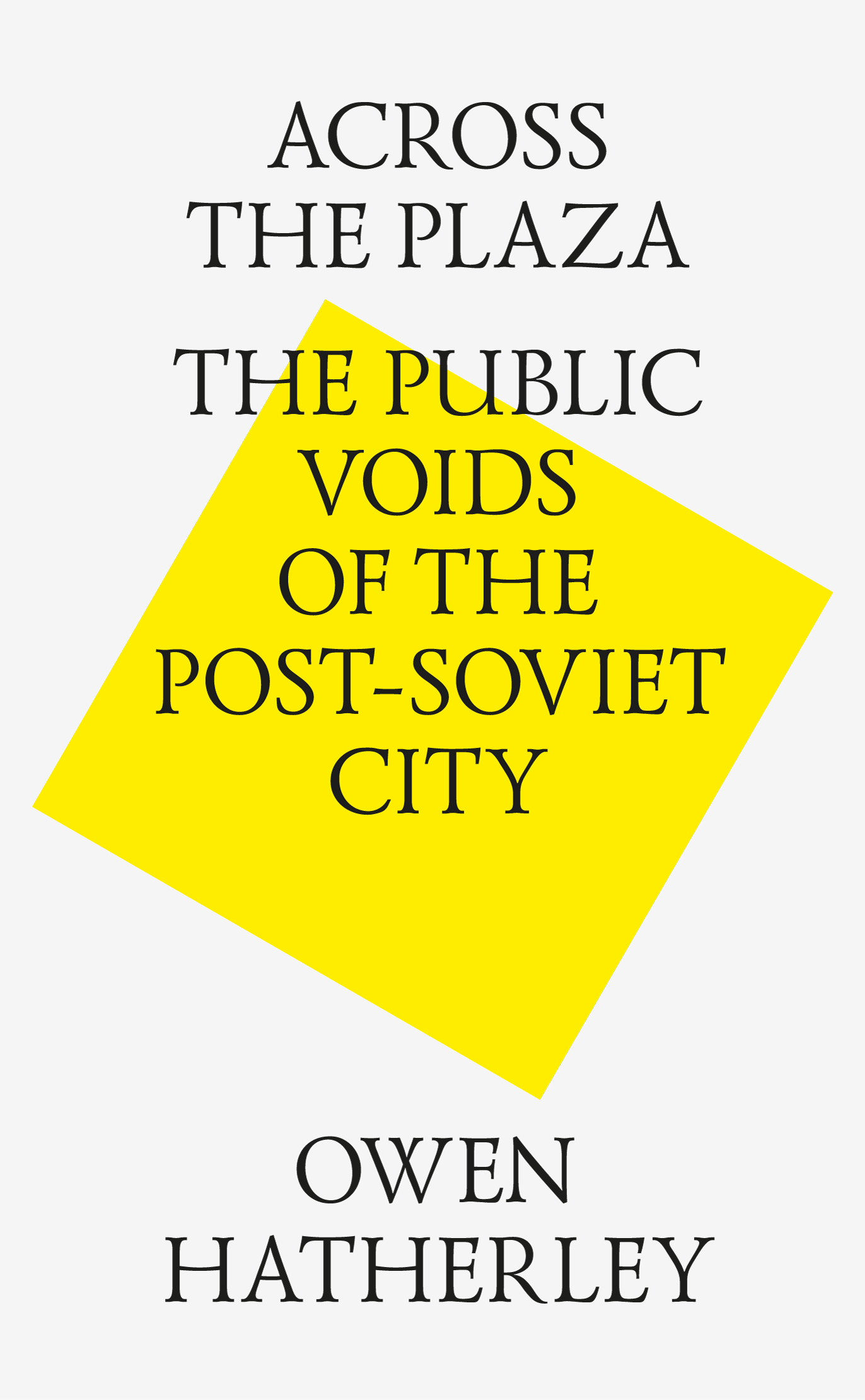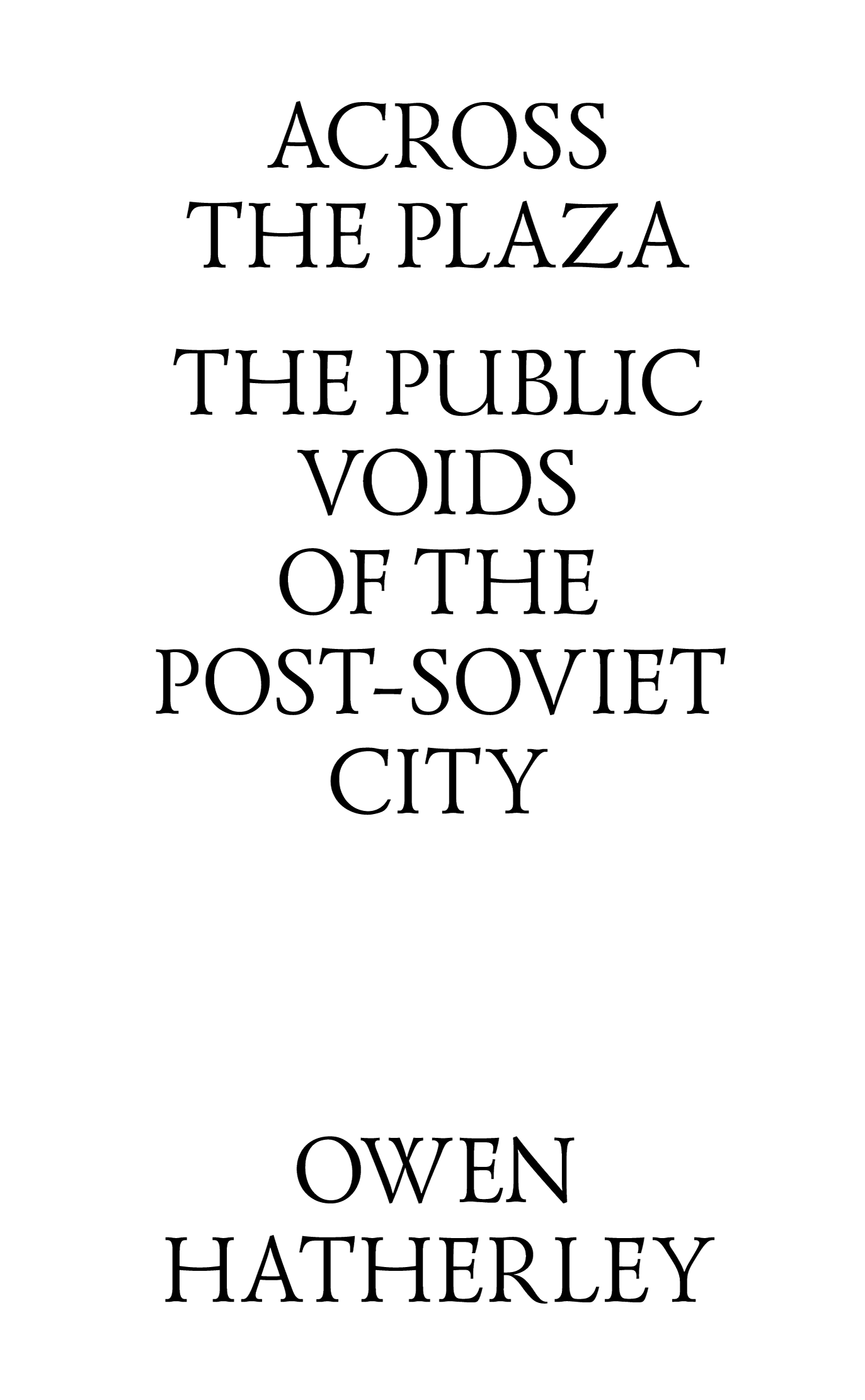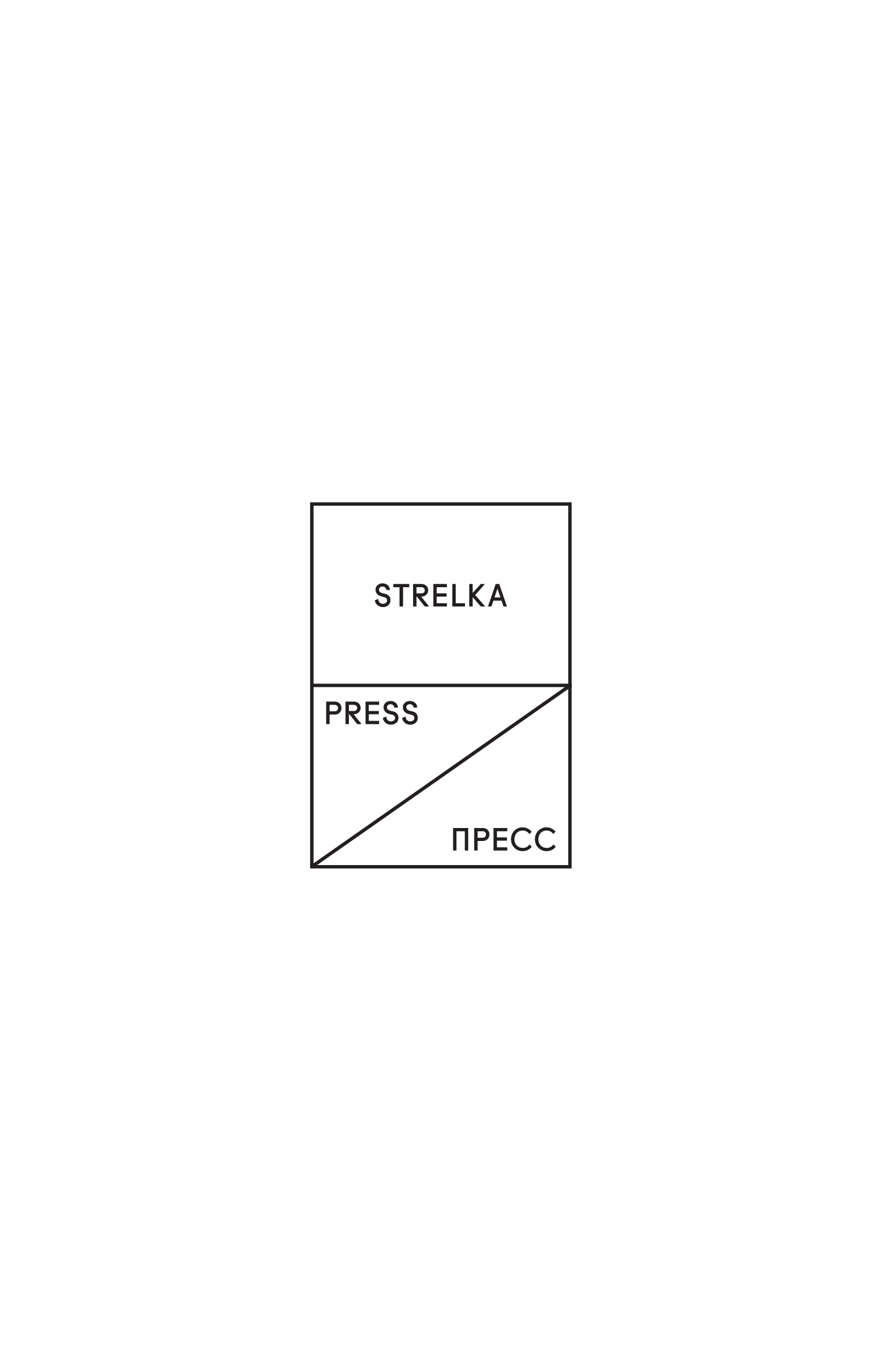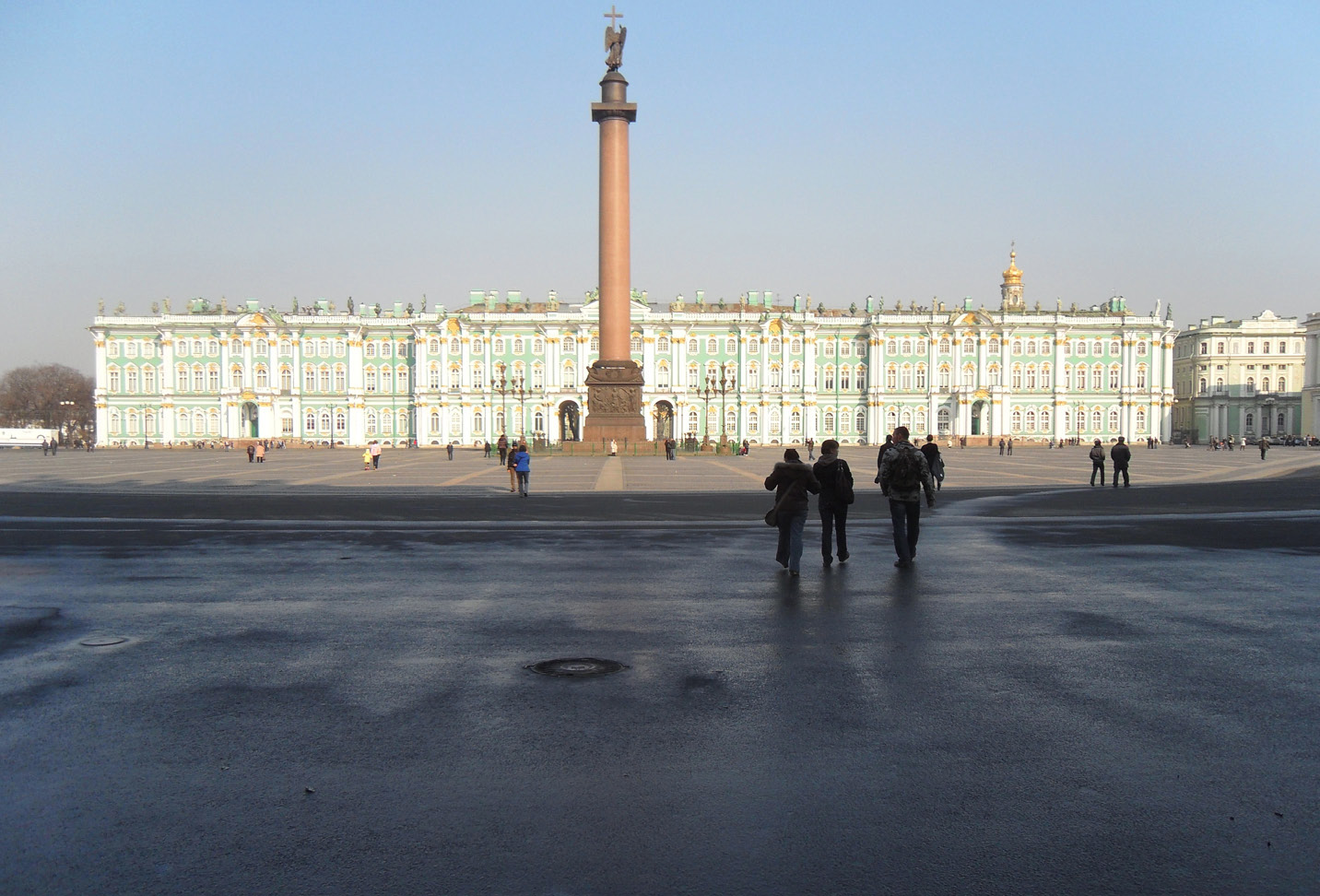Palace Square, St Petersburg
An Empty Space Creates a Richly Filled Time
INTRODUCTION
A wide open space, a big city-centre square. When you stand in the middle of it the wind lashes ruthlessly at your face. Surrounding you are buildings, huge things of granite and concrete on a strict axial plan, governmental offices no doubt. You are probably being watched your presence registered by a bored CCTV operative nursing a coffee in a nearby office but you know that just over twenty years ago you might have been watched instead by a secret police force. Which can give you a frisson, if that kind of thing is to your taste. The square itself has some movement in it people are smoking under some awnings in their lunch break, someone else is begging, the kiosks of informal commerce have a bustle around them. If youre in the former East Germany or the former Soviet Union, theres also something more inanimate an exhortative statue of Marx or Lenin may be keeping you company, or gesturing aggressively at you for your sloth. Elsewhere, the punctuation is provided by more traditional monuments a warlord, a Corinthian column, a bewhiskered general. But the feeling of immense, unused space still endures, and thats the source of that wind, the biting wind that sooner or later will force you back indoors. Oh the square is interesting, for sure, a three-dimensional survivor from a dead age, a museum piece. But its a mistake, nonetheless. You certainly couldnt learn anything from it.
There are few things in urbanism today so unfashionable as that wide open sense of space. Looking round the subjects of this text at the likes of Berlin-Alexanderplatz, Warsaws Plac Defilad, Katowices Rynek the first response of most contemporary urban planners would be a feeling of disgust, followed by thoughts as to possible amelioration. What are we to do with this disaster? On this, traditionalists and modernists can unite. Whichever form it takes, the square will exemplify that principle at its apparent worst the classical principle of the axis, the formal composition with everything in its right place, nothing left to chance, or the modernist principle, now usually disavowed (though often deployed in other contexts), of the object in space. In both instances, the function is the same: to frame, to create distance, to conjure cheap games with scale and perception. No planner whether a New Urbanist, one of those Disney-sponsored enthusiasts for the eighteenth century, or a piazza-fixated urbanist of a more high-tech stripe would want anything to do with these giant, authoritarian creations. But is this just aesthetics, or does their hostility have any specifically political justification? Could it be the case that the uncanny uselessness of space potentially has certain subversive uses? Could it even be that these empty spaces are in fact more genuinely suited to public action and militancy than the overdetermined, vibrant bustle of neoliberalism?
To answer these questions, we need to fix what sort of spaces these are, and what objects they contain. Lets take a modernist example, one easily disassociated from any direct affiliation with Sovietism: the Kulturforum in the former West Berlin. Here we have first of all a series of architecturally extremely highly wrought products: the insular, finely detailed, obsessive modernist classicism of Mies van der Rohes Neue Nationalgalerie, whose various plinths, platforms and columns seem to encourage supplication, placing the building at an elevated remove from its surroundings; then a marooned neo-Gothic church, a mildly modernist caf and, facing this, three buildings whose design was led by Hans Scharoun the Philharmonie, Chamber Music Hall and State Library. Scharouns attention-grabbing, demonstrative, expressionist structures sit at the corner of a vague expanse whose indeterminacy draws attention to the drama of the architecture, but does little to make the area feel like a social space. The vague, temporary feel is increased by the gravel paving. Surely it is only the prestige of the buildings, and of the exalted names of great Weimar Republic modernists like Mies and Scharoun, that has stopped planners from filling up the space with malls, housing and kiosks. As it is, the Kulturforum remains one of those last places in the contemporary city where you can still get a blast of the bracing air that once accompanied modernist city planning.
The lustrous emptiness, coldness and paranoia of this new kind of space is fervently romanticised in John Foxxs sweeping 1980 hymn to the modernist public square, Plaza: On the Plaza / Were dancing slowly, lit like photographs / Across the Plaza / The lounge is occupied by seminars / Down escalators, come to the sea view / Behind all the smoked glass no-one sees you / I remember your face / From some shattered windscreen. It gets to the heart of what makes the plaza, and the Kulturforum, so interesting, and so unlike the tamed urban congestion of contemporary planning its paradoxical official otherness , its sense of uselessness and formalism, its enjoyment of the sinister. The Kulturforum was once adjacent to the genuine wastes of the death strip, the lethal empty space where border guards shot at anyone trying to escape East Germany. To see what follows this approach to urban space, we need only take a short walk to the place that now fills that stretch of death strip the new Potsdamer Platz.
An interesting urban mistake in its own right, Potsdamer Platz is an attempt to conjure up the metropolitan culture of congestion of interwar Berlin, to recreate a busy commercial/traffic intersection (this was the location of Germanys first traffic lights) in the spot where by 1989 there was only windswept wasteland. The buildings, especially those by Hans Kollhoff, are finely detailed, expensive reinterpretations of Weimar-era expressionism, while the surrounding malls and cinemas try to programme bustle, refuse to let space fall empty. Potsdamer Platz strains every sinew to create movement, activity, mix of uses; that its ultimate impression is one of great coldness, seldom inspiring affection, is an enduring irony. The difference between its strained attempt at metropolitanism and the Kulturforums quiet is fascinating; but the politics of this are more complicated than they may at first seem.
At this point, a brief prehistory of these showpiece squares is in order. If it comes from anywhere in particular, the post-war urban plaza emerges from a peculiar and often disavowed modernisation of both Prussian militaristic planning and the super-European programmatic plan of Tsarist St Petersburg, which was, it should not be forgotten, an eighteenth-century Dubai a geographically improbable project in a brutally hostile climate constructed on the orders of an absolute monarchy by the labour of serfs. Its most famous architects, Rastrelli, Rossi et al, were stars from abroad. When these Italians came to designing on this lethal, pestilent marsh in the Gulf of Finland, they took the formal devices of classicism and the baroque and pushed them to unheard of extremes. The cities of Italy or France still had an existing medieval bustle to remove before they could fit the planners mathematical prescriptions; so too did Moscow, where Red Squares salutary enormousness gave way disappointingly to a tangle of medieval alleys. In St Petersburg no such impediment existed. Accordingly, the salient feature of the city is a boulevard of still-astonishing width and expanse, Nevsky Prospekt, leading to a Palace Square that is similarly unbelievable in its sheer size and flatness. Its as if the steppe outside this city had to be recreated at its core. Its buildings Carlo Rossis General Staff, for instance, with its colossal archway-entrance framing the Winter Palace are on an outrageous scale. From here as far as the eye can see stretch buildings of an almost-uniform height, except for those considered worthy of superelevation: the golden dome of St Isaacs Cathedral, or the cruel spire of the Admiralty, the origin of a thousand Stalinist towers two centuries hence.



